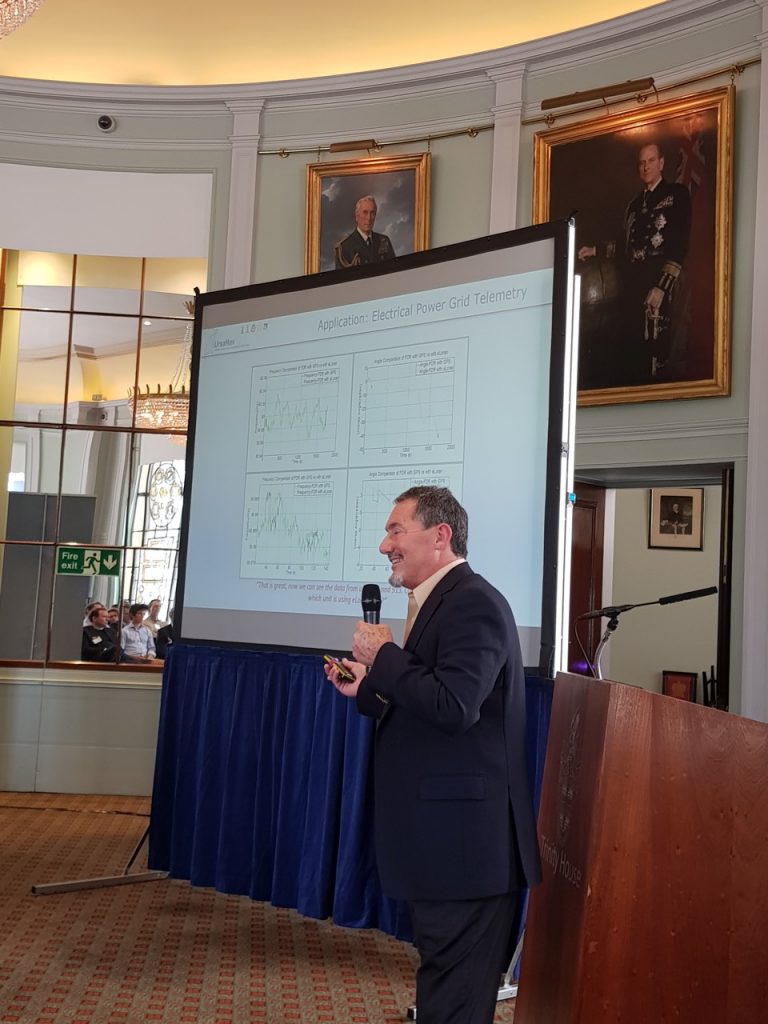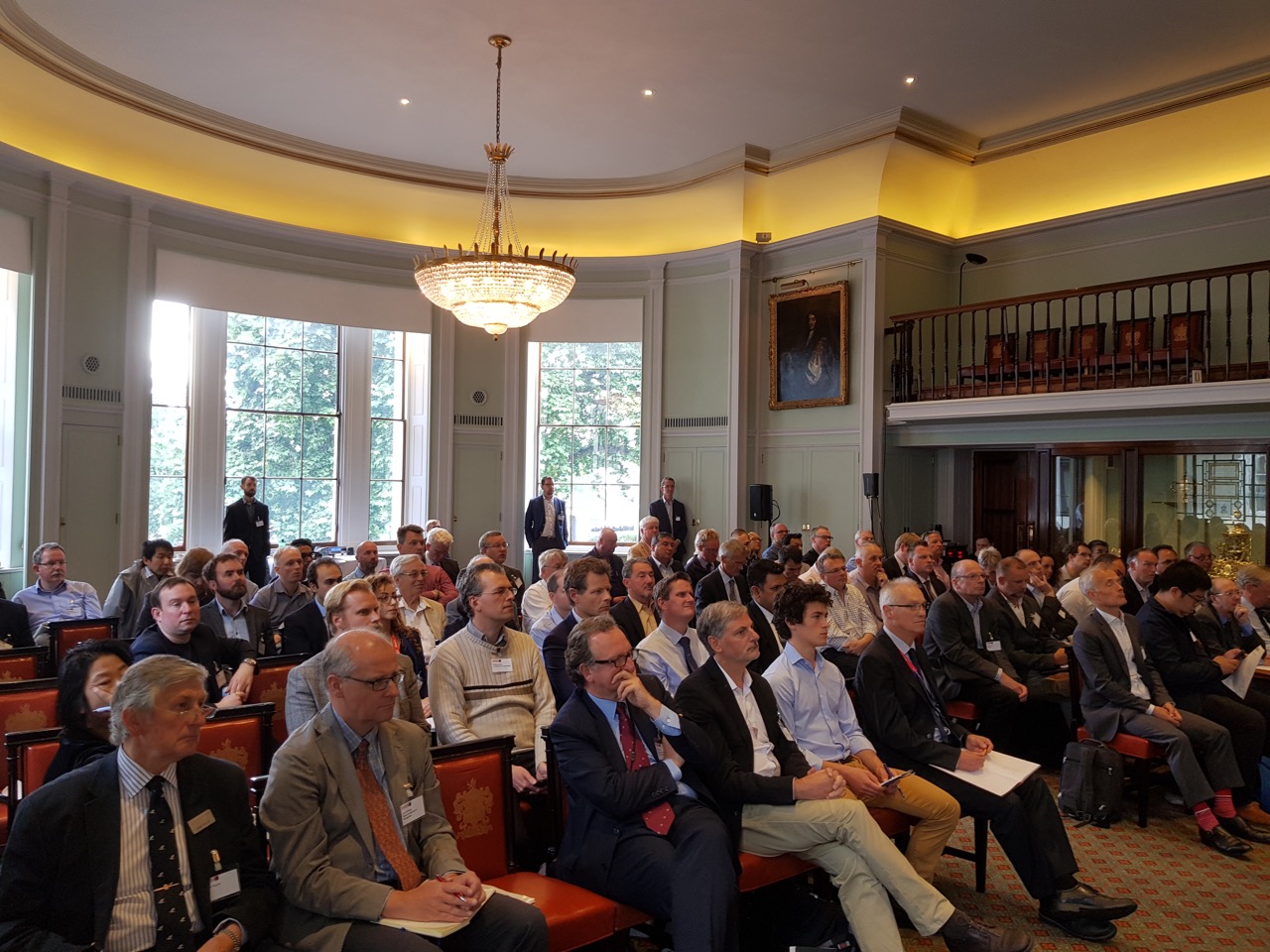With eyes on a future where reliable GNSS back-ups are in place to protect against both accidental or intentional disruptions of GNSS, three organizations represented on Positioning, Navigation and Timing Technical Group (PNTTG) – Innovate UK Knowledge Transfer Network (KTN), Royal Institute of Navigation (RIN) and The General Lighthouse Authorities – hosted a seminar last month to review user needs and the status of two possible RF back-up options to GNSS mentioned in the London Economics report on the economic impact of a GNSS disruption.
With so much of today’s society reliant on GNSS technology, any extended disruption of service could cause quite an uproar. Several of these potential problems were described in great detail in a government report commissioned by Innovate UK along with the UK Space Agency and the Royal Institute of Navigation in 2017.
Additionally, the recently published Blackett report “Satellite-Derived Time and Position: A Study of Critical Dependencies” concludes “we must take steps to increase the resilience of our critical services in the event of Global Navigation Satellite System (GNSS) disruption, including by “adopting potential back-up systems where necessary”.
Implementation of the Blackett recommendations is being overseen by a UK Cabinet Office Blackett Review Implementation Team (BRIG). The technical aspects of implementing the recommendations are being led by a (PNTTG), reporting to the BRIG.
The event, held June 14 in London attracted strong interest, with more than 100 delegates, including representation from user communities requiring assured and accurate position or time. Presenter organizations included UK Space Agency, RIN, Spirent, Imperial College Institute for Security Science and Technology, Ursanav and Orolia. Nick Lambert of NLA International facilitated and chaired the event.

“The reason we did this event is the UK government’s interest in a back-up for GNSS was given a huge boost with the publication of the economics report on the cost to the economy of losing GNSS,” Bob Cockshott FRIN,PNT Lead, QuantumLead, Knowledge Transfer Network, told Inside GNSS.
The status of two possible RF back-up systems was presented and discussed: enhanced Loran (eLoran) by Chuck Schue, CEO Ursanav; and Satellite Time and Location (STL) by John Fischer, CTO Orolia. Orolia also demonstrated a static STL system as a back-up to GNSS, generating considerable interest amongst delegates, according to Cockshott.
STL, which is operational and undergoing user trials and evaluation at present, uses the existing Iridium global satellite constellation’s paging channel to enable a positioning and timing capability on a global basis. Power levels are 1000x (30dB) higher than GNSS, meaning that use indoors becomes possible. STL is currently being evaluated for provision of precise time to financial and government institutions in USA, UK, Italy and Japan. The system uses a narrow-band signal just above the GNSS L-band frequencies. As the signals are encrypted it is practically impossible to spoof STL. The higher power level also offers potential resiliency advantages to GNSS.
eLoran is a ground-based system for time and position, operating in internationally protected frequency bands. The combination of high power and low frequency enables wider coverage than GNSS including indoors and even limited capability under water. eLoran stations are operational to enable precise time in the U.S. (East Coast) and in the UK. Positioning from eLoran would require additional stations to be made live, noting however that each ground station offers very broad geographic coverage. As well as the U.S. and the UK, other regions offering or considering eLoran type services include Russia, Asia (four countries including China), Middle East (three countries) and Australia.
In addition to the possibility to consider back-up systems to GNSS on a discrete basis, Orolia and STL shared a white paper on the benefits of a holistic approach to resilient GNSS. For more information on Oralia, click here.
The seminar concluded by considering some key questions, including how to set up a single UK point of contact for industry and users to increase awareness, share insights and knowledge, and develop a roadmap towards standards and accreditation for resilient systems. This work is being further considered by the organizers, who will report to the next BRIG and PNTTG meetings. Comments and views are invited, please contact RIN or KTN.
“We thought this event was a good thing to,” Cockshott explained. “Not a lot of people know about the Orolia STL facility. What we wanted to do was really two things. One was help with awareness of it, but also to provide a forum so that potential users could ask Orolia technical questions about what it does and does not do. We wanted to bring users and potential suppliers together.”
He added that while “awareness is growing, it’s still low. When people talk about hacking, the fragility of GNSS is rising, but the awareness is still much too low.”
RIN, which connects interested parties to promote knowledge and share insights between those interested in all aspects of positioning, navigation and timing, is hosting the International Navigation Conference 2018 in November in Bristol, UK.
The Knowledge Transfer Network is funded by the UK government to stimulate wealth creation by making connections between businesses and government and academics and works to connect supply chains and researchers to users,Cockshott stated.
Following last month’s event, the consensus was that there needs to be a mechanism for raising awareness and there needs to be a point of contact. The organizers added that RIN is looking into ways to make this happen.






